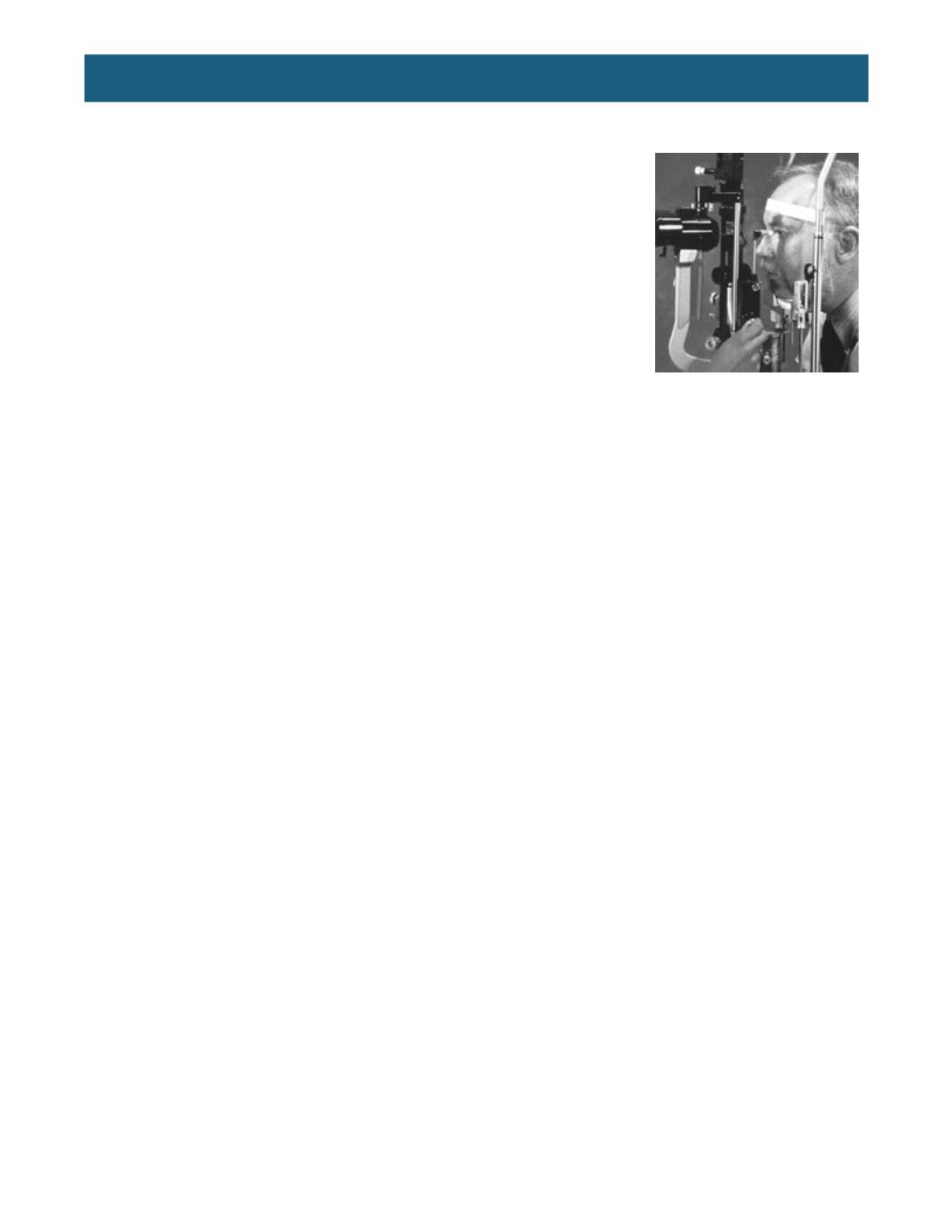

© 2016, BSM Consulting
10
Basics of Glaucoma
INFECTION CONTROL IN CLINICAL TONOMETRY
Many infectious agents, including the viruses responsible for acquired
immunodeficiency syndrome, hepatitis, and epidemic keratoconjunctivitis,
are detectable in tears. To prevent transfer of such agents, tonometers must
be cleaned after each use. Use the following processes:
•
The prism head of both Goldmann-type tonometers and the Perkins
tonometer should be cleaned between every exam. The prisms
should be soaked in either a 1:10 sodium hypochlorite (household
bleach) solution, 3 percent hydrogen peroxide, or 70 percent
isopropyl alcohol for 5 minutes, or be wiped thoroughly with an
alcohol sponge. If a soaking solution is used, the prism should be
rinsed and dried before reuse. If alcohol is employed, it should be
allowed to evaporate, or the prism head should be dried before
reuse to prevent damage to the patient’s epithelium.
•
The tonometer tip should be cleaned in the presence of the patient prior to use. It is important to
allow sufficient time for the prism tip to dry to keep from damaging the cornea.
•
The front surface of the air-puff tonometer should be wiped with alcohol between patients
because tears from the patient may contaminate the instrument.
•
Portable electronic applanation devices employ a disposable cover, which should be replaced
immediately after each use.
•
When the tip of the Tonopen has dirt and contaminants in the airspace between the sensor and
the housing, the sensor cannot move freely, resulting in erratic readings and a “bad” calibration
indicator. Cleaning the tip in such situations is necessary. Use canned air, rather than any
chemicals or solutions, to rid the instrument of dust and other contaminants.
•
The Schiotz tonometer requires disassembly to clean both the plunger and the footplate. Unless
the plunger is clean (as opposed to sterile), the measurements may be falsely elevated because
of increased friction between the plunger and the footplate. Use a pipe cleaner to clean inside of
the footplate of tears and any tear film debris. The same solutions for cleaning prism heads then
may be employed to sterilize the instrument.
Evaluation of the Optic Nerve Head
Although elevation of IOP is often the sign that leads to the detection of glaucoma, the appearance of the
optic nerve head is equally important. The characteristic change that occurs in the disc in glaucoma is an
abnormal amount of depression of tissue known as pathologic cupping. The optic nerve head, or optic
disc, is usually round or slightly oval in shape and contains a central cup. This cup is the central
depression of the disc that is seen in most normal individuals. The size of this depression is often
described in relation to the diameter of the disc as the cup-to-disc ratio: The numerator is the diameter of
the cup divided by the diameter of the entire disc taken as 1.00. The average cup-to-disc ratio is 0.4 to
1.00, or 0.4. As glaucomatous damage advances, progressive enlargement of the cup occurs at the
expense of the surrounding rim of nerve tissue.
The tissue between the cup and the disc margin is called the neural rim or neuroretinal rim. The rim in
normal patients has a relatively uniform width and a color that ranges from orange to pink. The size of the
physiologic cup is developmentally determined and is related to the size of the disc. For a given number
of nerve fibers, the larger the overall disc area, the larger the cup.
Cupping in small nerves should be held with high suspicion. The cup-to-disc ratio may increase slightly
with age. Additionally, people with myopia have larger eyes, discs, and cups than do those with normal
vision or those with hyperopia.
















